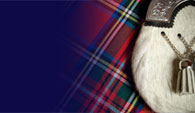Irish Jig Double Time
History: There is little history of Irish dancing, caused in all probability by the disturbed state of the country during and after the Tudor wars together with the ordanances forbidding everything Irish including the language. The factors are responsible for the decline in the peaceful arts and for the gap in both oral and written records. Yet before wars engulfed the country, Irish music and dancing were much admired and had permeated English life to an extent difficult to appreciate.Peadar O'Rafferty tells us that literature connected with Irish Dancing is so meager that present day students and masters are almost dependent on oral tradition for information on the subject and very little is known of the origin or early growth of the art in Ireland. There is no mention in any of the old manuscript books but we are informed that the 16th century witnessed the greatest development of the art and up to 1850 it was the favourite amusement of the people.
In her book " European Dances" Joan Lawson says that Irish dancing is a perfect reflection of the dual nature of the Irish people, there being two distinct styles due possibly to Ireland's historical background which is full of contradictions.
The early 19th century saw a revival of national tradition and gave rise to the founding of many dancing schools such as those of Limerick, Kerry and Cork. The polishing of steps and elaboration of footwork followed. As Miss Lawson points outs, unfortunately the dancing masters were not interested in the people's dances of the remote countryside and in imposing their more polished style on the peasants, many of the occupational gestures were eliminated with the result that the dancing lost much of its spontaneity.
In its syllabuses Of Irish Dancing, the New Zealand Academy has confined its work to the Single and Double (or Broken) Time jigs, the Irish Hornpipe and Irish Reel, but has endeavoured to present the contrasting styles of Irish dancing.
The jigs in Double Time and the Irish Hornpipe are quite different in character. The complication of the steps calls for more technical accomplishment, the body is held erect but passive and the arms move only in relation to natural body movements.
The constant interchange of population between Ireland and Scotland, the characteristics acquired from both nations from regiments during the time of war and visiting Sailors, has led to interchange of tunes and steps.
The Jigs, Hornpipe and reel were introduced to New Zealand by early settlers and members of religious orders from Ireland and have retained their popularity with dancers and spectators alike.
After much study, research for authenticity and consideration for New Zealand requirement, the syllabus was prepared for members of our Academy for teaching and examination requirements.
Interpretation: The dance is performed in a relaxed and dignified manner reflecting the rhythm and lilt of the music through the intricate movements of the feet in perfect timing.
Execution: All movements are controlled from the hips downward with no over-accented beating. Head body and arms move with ease in harmony with the various step movements. Timing is clearly marked but never over exaggerated.


